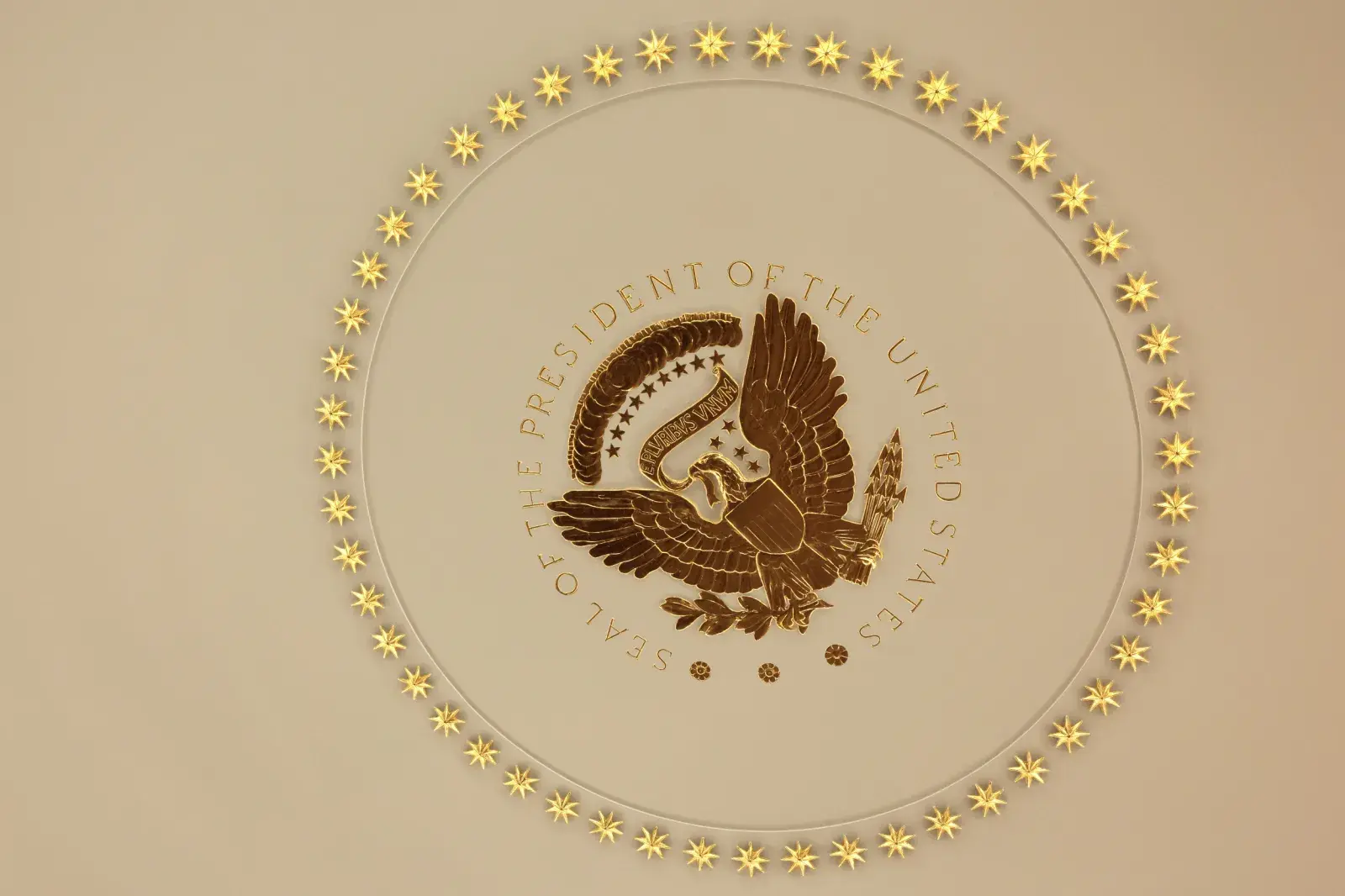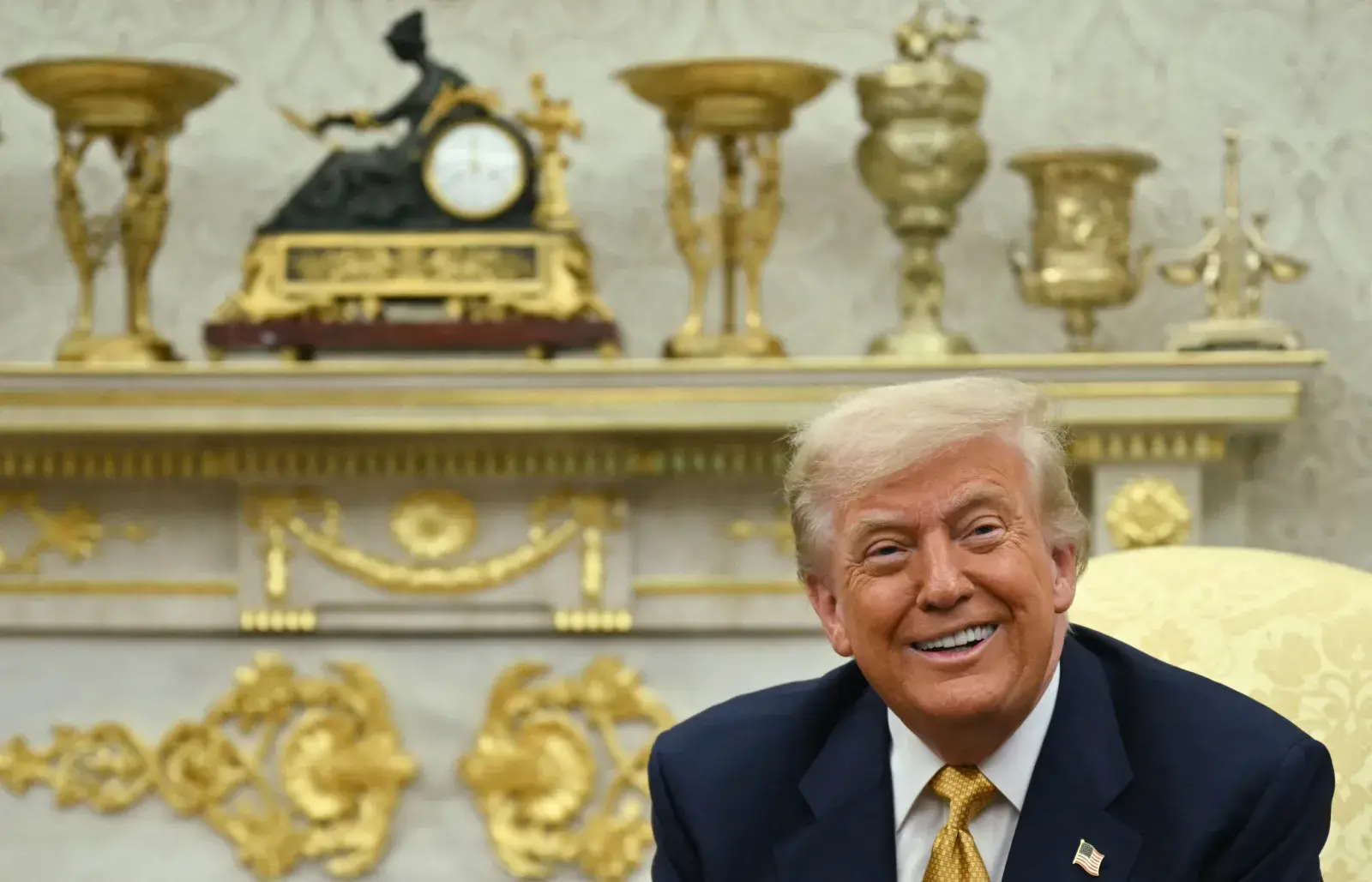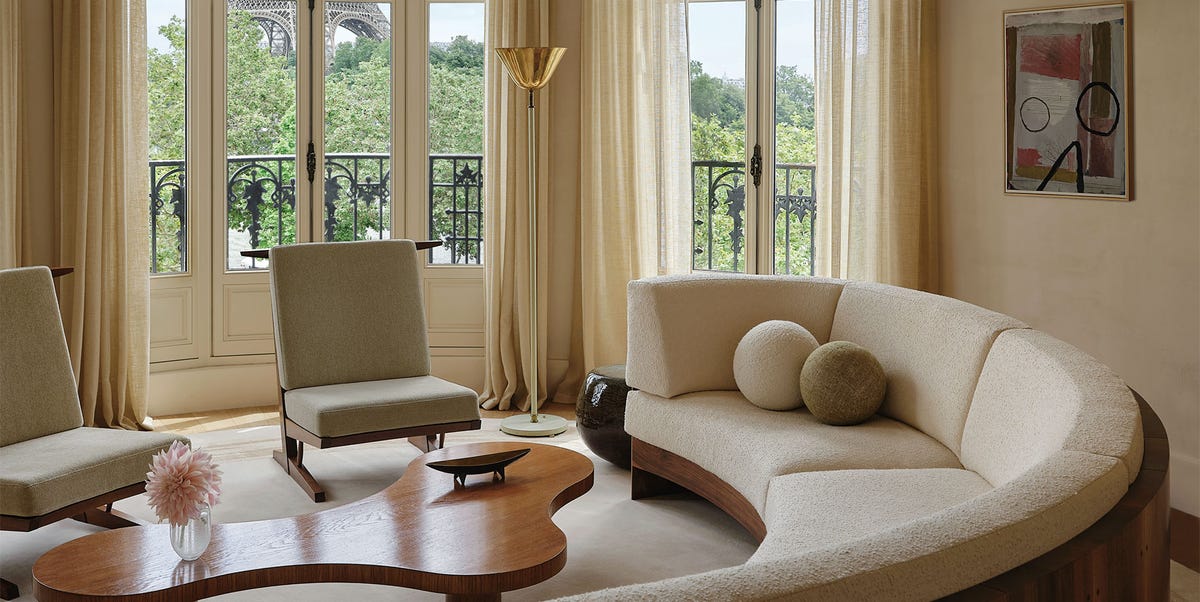Interior Designer Reviews Trump’s White House Renovations…

The Oval Office has always been a mirror of the president who occupies it. Under Ronald Reagan, it glowed with warm reds; under Barack Obama, it softened into earth tones; under Joe Biden, a deep-blue rug anchored the room’s sparse, traditional palette.
Now, in Donald Trump’s second term, the space is unmistakably his. Gold trim outlines the crown molding, heavy gilded frames crowd the walls, and the presidential seal above has been painted to catch the light. It is, by any measure, the most visually altered Oval Office in decades.
For White House watchers, the flourishes come as no surprise. Trump has steadily added gilded touches to nearly every corner of the room—a shimmering aesthetic reminiscent of his days as a New York real estate developer.
Tommy Landen, a New York-based interior designer and influencer, analyzed Donald Trump’s revamped Oval Office in a widely viewed TikTok video, where viewers agreed the changes were “dramatic.”
Speaking to Newsweek, he dissected the transformation in detail—from the gilded crown molding to the ornate new wall decals—arguing that the redesign pushes the room away from its neoclassical roots and toward the look of a “tacky” European palace.
“Most presidents do make changes to the Oval Office to make it their own,” he said. “However, the changes during this particular Trump term have been really dramatic.”
When Style and Architecture Clash
To Landen, the problem isn’t the gold—it’s how it’s being used. “Gold is very beautiful, and gold accents can be really beautiful, but you just can’t overload it,” he said. “When you overload it and just keep adding more and more, it becomes overwhelming. It becomes gaudy and tacky.”
The White House, he noted, was built in a neoclassical style—restrained, symmetrical, designed to evoke the ideals of a young republic. The Oval Office’s gilded transformation pulls it in a different direction.

“It’s more baroque and more like what you’d see in European palaces,” he said, “which was the antithesis of what they were going for with the design of the White House.
It’s not Versailles, it’s not a baroque palace. It’s the White House.”
Landen called the effect less “head of state” and more “state visit to the Kremlin,” with the kind of heavy gold ornamentation common in Eastern European government halls or Russian reception rooms. “That style works in places that were built for it,” he added. “Here, it just fights with the architecture.”

The visual shift begins underfoot. Biden’s dark-blue Clinton-era rug, featuring the presidential seal, has been replaced with Ronald Reagan’s pale sunburst version, bordered with olive branches meant to symbolize peace. Around the room, flags of the Army, Marine Corps and Navy now flank the Resolute Desk, replacing Biden’s more subdued two-flag display.
From there, the eye is pulled upward to gold-trimmed crown molding and the presidential seal overhead — once a quiet plaster detail, now painted gold with matching stars. The fireplace mantle holds historic gold urns and baskets from the White House collection, framed by an expanded “gallery wall” of portraits in ornate, gilded frames.

“It’s truly adding architectural elements that don’t belong there,” Landen said. “When you start building onto it in ways that ignore the original style, you lose the integrity of the room.”
The ‘AliExpress Palace’ Effect
Trump is clearly proud of his Oval Office makeover. He points out that the gold accents were made by the same artisan who worked on Mar-a-Lago, his palatial estate in Florida. During a Fox News tour at the start of his second term, he led host Laura Ingraham to the doors and gestured toward the gold angels above them.
“It’s really become quite a beautiful place,” he said.

Some of the new pieces — shell ornaments above the bookshelves, gilded decals on the doors — have been ridiculed online for looking like they were ordered from the Chinese e-commerce giant AliExpress. Landen doesn’t weigh in on sourcing, but says the criticism reflects the risk of layering too much ornamentation into a historically restrained space.
From a design perspective, Landen says the key to using gold successfully is knowing when to stop. “Something that could be very expensive and elegant becomes the opposite when there’s just too much of it,” he said. In the Oval Office, the sheer density of gilded surfaces — on walls, furniture, ceilings, and accessories — leaves nothing for the eye to rest on.
That lack of breathing room, he explains, is what shifts the impression from stately to overwhelming. In residential projects, he advises clients to let the architecture guide the level of detail, rather than competing with it.

“You have to honor the architectural style you’re working in,” he said.
Donald Meriam, a White House history enthusiast, agrees on the importance of restraint but points out that questionable Oval Office makeovers aren’t unique to Trump.
“Clinton had those god-awful candy cane–striped couches,” he said. “Every president makes choices that not everyone will like. The difference here is the scale — this is the entire room being reprogrammed visually, not just a bad fabric pick.”

The Message in the Makeover
Presidents have always left their imprint on the Oval Office — Reagan’s warm reds, Obama’s clean-lined earth tones, Biden’s deep-blue rug. But Landen says Trump’s version sends a message that may not be the one intended.
“I think the message he’s trying to send is one of power, wealth, and excess,” he said. “But it looks cheap. It almost makes him seem smaller for doing all of this to try to send a message that isn’t landing for anyone.”
The same aesthetic is reshaping the White House grounds. The Rose Garden’s grass lawn — once the site of Tricia Nixon’s wedding and the historic handshake between Israeli Prime Minister Yitzhak Rabin and PLO Chairman Yasser Arafat — has been replaced with pale stone tiles.
Trump says the new Rose Garden is more practical for formal events; Meriam calls it “a cold, hard expanse” that stripped away “the softness and charm of a living, breathing symbol of American history.”

link





